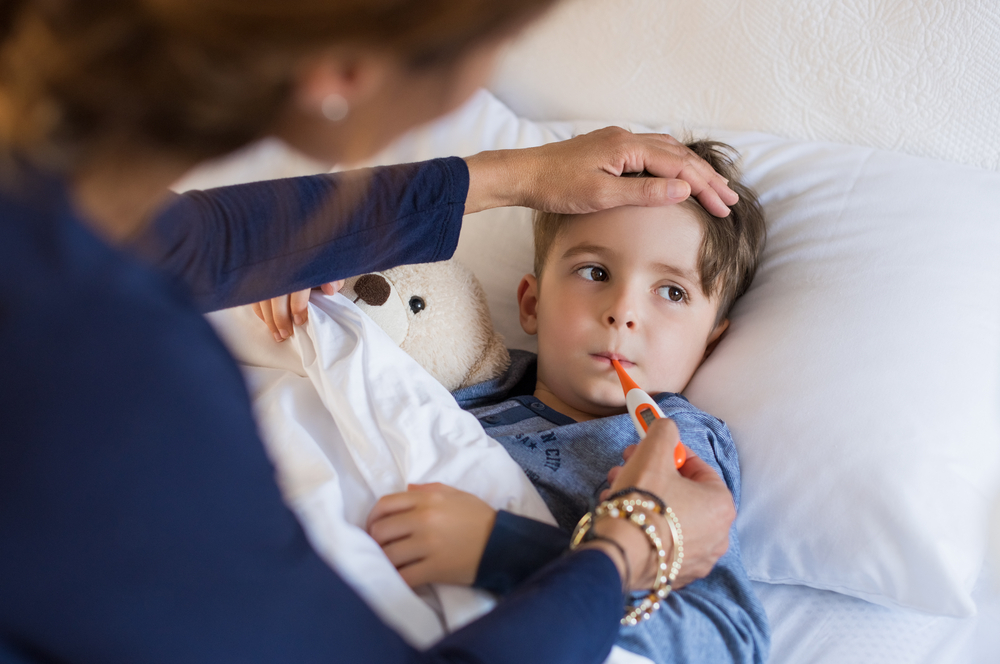Autumn and winter months are known as the season of sickness especially for children. Most of the disorders seen in this period cause high fever. Many families are worried when they encounter rising fever values and their general health can be negatively affected because they can unconsciously resort to wrong methods. Here are the things to be aware of about high fever in children…
Autumn and winter are the times of infectious diseases. As the coronavirus is among the new diseases this year, families are more panicked if their children develop a fever. However, when combating infections that cause high fever, it is important to first measure the correct temperature, have information about the degrees of fever, and know how to reduce fever by avoiding wrong practices with anxiety.
1. If there is fever, the body is fighting
Fever is a biological response of the body to infectious agents. To achieve this, there is a temperature setting center in the hypotolamus region of the brain. When necessary, body temperature increases with the activation of the heat setting center. Body temperature is between 36.5 and 37 degrees under normal conditions. This temperature changes according to various times of the day. When this temperature rises, elements of the immune system are activated. At this point, the immune system is fighting viruses. In other words, fever is a healthy reaction of the body. It should be known that fire is beneficial for the body. However, caution should be exercised in terms of temperatures of 38 degrees and above.
2. In the first three months, armpit and rectal measurement is appropriate
Fever of small babies; The food they take can vary depending on the clothes they are wearing or the environment they are in. Fever measured in the armpit 37.5; A high temperature is considered to be above 37.8, measured from the ear and anus. Fever criteria in infancy and childhood are slightly different. It is accurate to measure armpit and rectal temperature in the first three months of babies. If the temperature measured in the armpit is above 37.5, it is necessary to undress the baby first. Generally, babies are dressed in thick clothes, thinking that they will get cold, but this is a wrong practice. Fever should be measured again 15 minutes after the baby’s environment is cooled a little. If it is still above 37.5 degrees, a doctor should be consulted.
3. High fever is important in the first 3 months
It should be known that babies are more prone to infections in the first 3 months. In case of fever, it is important to strip babies over 3 months first and take a shower with 30-35 degrees water. If the fever continues to rise, an antipyretic can be used in consultation with the doctor. If the baby’s nutrition is normal and activity is appropriate; If there are no conditions such as vomiting, diarrhea, change in consciousness, rash, drowsiness, passing out, it can be a little more calm and expected. Fever usually decreases within 1-1.5 hours with appropriate antipyretic.
4. Do not use vinegar water or alcoholic water
If the fever is above 38 degrees and does not drop, it is important to consult a specialist. Vinegar and alcoholic water should not be used to reduce fever in babies and children. Because although these seem to reduce the fever in the beginning, they can actually increase it even more. Alcohol and vinegar water first causes a fever by narrowing the veins and then expanding suddenly. If the general condition is good in children over the age of two, it can be expected a little longer. Warm showers, thinner clothes and antipyretic methods are important. If the child’s general condition is good, his nutrition and activity are normal, it can be expected, but in this case, the doctor should be contacted.
5. Breastfeed small babies a lot
Breastfeeding is of great importance in case of fever in small and breastfed babies. These babies need to be breastfed more frequently in case of fever because breast milk is the best weapon to fight infection. Increasing water and food intake is of paramount importance in older babies and children.

